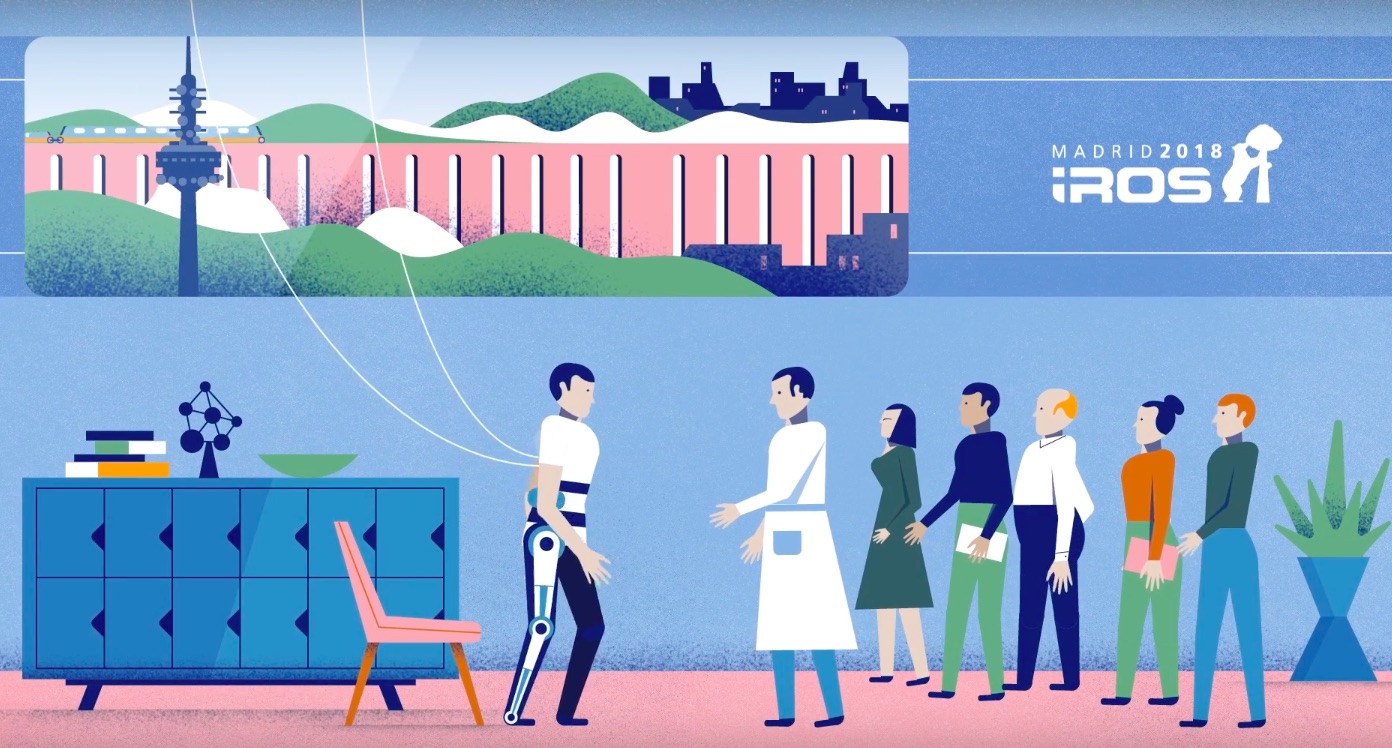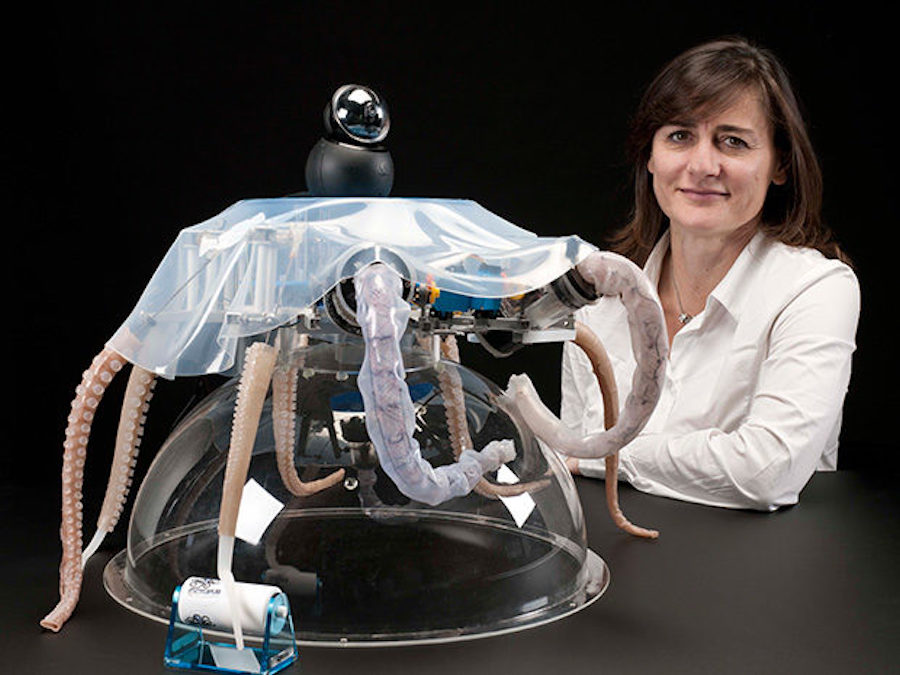
A day before snow hindered New York commuters, researchers at the University of Iowa and Princeton identified the growth of urbanization as the leading cause for catastrophic storm damage. Wednesday’s report stated that the $128 billion wake of Hurricane Harvey was 21 times greater due to the population density of Houston, one of America’s fastest growing cities. This startling statistic is even more alarming in light of a recent UN study which reported that 70% of the projected 9.7 billion people in the world will live in urban centers by 2050. Superior urban management is one of the major promises of autonomous systems and smart cities.
Today, one of the biggest headaches for civil planners is the growth of traffic congestion and demand for parking, especially considering cars are one of the most inefficient and expensive assets owned by Americans. According to the Governors Highway Safety Association the average private car is parked 95% of the time. Billions of dollars of real-estate in America is dedicated to parking. For example, in a city like Seattle 40% of the land is consumed by parking. Furthermore, INRIX analytics estimates that more than $70 billion is spent by Americans looking for parking. The average driver wastes $345 a year in time, fuel and emissions. “Parking pain costs much moreNew Yorkers spend 107 hours a year looking for parking spots at a cost of $2,243 per driver,” states INRIX. This month I spoke with Dr. Anuja Sonalker about her plan to save Americans billions of dollars from parking. Dr. Sonalker is the founder of STEER Technologies, a full-service auto-valet platform that is providing autonomous solutions to America’s parking pain. The STEER value proposition uses a sensor array that easily connects to a number of popular automobile models, seamlessly controlled by one’s smart phone. As Dr. Sonalker explains, “Simply put STEER allows a vehicle user to pull over at a curb (at certain destinations), and with a press of a button let the vehicle go find a parking spot and park for you. When it’s time to go, simply summon the vehicle and it comes back to get you.” An added advantage of STEER is its ability to conserve space, as cars can be parked very close together since computers don’t use doors.
This month I spoke with Dr. Anuja Sonalker about her plan to save Americans billions of dollars from parking. Dr. Sonalker is the founder of STEER Technologies, a full-service auto-valet platform that is providing autonomous solutions to America’s parking pain. The STEER value proposition uses a sensor array that easily connects to a number of popular automobile models, seamlessly controlled by one’s smart phone. As Dr. Sonalker explains, “Simply put STEER allows a vehicle user to pull over at a curb (at certain destinations), and with a press of a button let the vehicle go find a parking spot and park for you. When it’s time to go, simply summon the vehicle and it comes back to get you.” An added advantage of STEER is its ability to conserve space, as cars can be parked very close together since computers don’t use doors.
Currently, STEER is piloting its technology near its Maryland headquarters. In describing her early success, Dr. Sonalker boasts, “We have successfully completed testing various scenarios under different weather, and lighting conditions at malls, train stations, airports, parks, construction sites, downtown areas. We have also announced launch dates in late 2019 with the Howard Hughes Corporation to power the Merriweather district – a 4.9 Million square foot new smart development in Columbia, MD, and the BWI airport.” The early showing from STEER’s performance is the results of its proprietary product that is built for all seasons and topographies. “Last March, we demonstrated live in Detroit under a very fast snowstorm system. Within less than an hour the ground was covered in 2+ inches of snow,” describes Dr. Sonalker. “No lane markings were visible any more, and parking lines certainly were not visible. The STEER car successfully completed its mission to ‘go park’, driving around the parking lot, recognizing other oncoming vehicles, pacing itself accordingly and locating and manoeuvring itself into a parking spot among other parked vehicles in that weather.”
In breaking down the STEER solution, Dr. Sonalker expounds, “The technology is built with a lean sensor suite, its cost equation is very favorable to both after market and integrated solutions for consumer ownership.” She further clarifies, “From a technology stand point both solutions are identical in the feature they provide. The difference lies in how the technology is integrated into the vehicle. For after market, STEER’s technology runs on additional hardware that is retrofitted to the vehicle. In an integrated solution STEER’s technology would be housed on an appropriate ECU driven by vehicle economics and architecture, but with a tight coupling with STEER’s software. The coupling will be cross layered in order to maintain the security posture.” Unlike many self-driving applications that rely heavily on LIDAR (Light Detection And Ranging), STEER uses location mapping of predetermined parking structures along with computer vision. I pressed Dr. Sonalker about her unusual setup, “Yes, it’s true we don’t use LIDAR. You see, STEER started from the principle of security-led design which is where we start from a minimum design, minimum attack surface, maximum default security.”
I continued my interview of Dr. Sonalker to learn how she plans to roll out the platform, “In the long term, we expect to be a feature on new vehicles as they roll out of the assembly line. 2020-2021 seems to be happening based on our current OEM partner targets. Our big picture vision is that people no longer have to think about what to do with their cars when they get to their destination. The equivalent effect of ride sharing – your ride ends when you get off. There will be a network of service points that your vehicle will recognize and go park there until you summon it for use again.” STEER’s solution is part of a growing fleet of new smart city initiatives cropping up across the automation landscape.  At last year’s Consumer Electronic Show, German auto supplier Robert Bosch GmbH unveiled its new crowd-sourcing parking program called, “community-based parking.” Using a network of cameras and sensors to identify available parking spots Bosch’s cloud network automatically directs cars to the closest spot. This is part of Bosch’s larger urban initiative, as the company’s president Mike Mansuetti says, “You could say that our sensors are the eyes and ears of the connected city. In this case, its brain is our software. Of Bosch’s nearly 400,000 associates worldwide, more than 20,000 are software engineers, nearly 20% of whom are working exclusively on the IoT. We supply an open software platform called the Bosch IoT Suite, which offers all the functions necessary to connect devices, users, and companies.”
At last year’s Consumer Electronic Show, German auto supplier Robert Bosch GmbH unveiled its new crowd-sourcing parking program called, “community-based parking.” Using a network of cameras and sensors to identify available parking spots Bosch’s cloud network automatically directs cars to the closest spot. This is part of Bosch’s larger urban initiative, as the company’s president Mike Mansuetti says, “You could say that our sensors are the eyes and ears of the connected city. In this case, its brain is our software. Of Bosch’s nearly 400,000 associates worldwide, more than 20,000 are software engineers, nearly 20% of whom are working exclusively on the IoT. We supply an open software platform called the Bosch IoT Suite, which offers all the functions necessary to connect devices, users, and companies.”
As the world grabbles with population explosion exacerbated by cars strangling city centers, civil engineers are challenging technologists to reimagine urban communities. Today, most cars are dormant, and when used run at one-fifth capacity with typical trips less than a mile from one’s home (easily accessible on foot or bike). In the words Dr. Sonalker, “All autonomous technologies will lead to societal change. AV Parking will result in more efficient utilization of existing spaces, fitting more in the same spaces, better use of underutilized remote lots, and frankly, even shunting parking off to further remote locations and using prime space for more enjoyable activities.”
Join the next RobotLab forum discussing “Cybersecurity & Machines” to learn how hackers are attacking the the ecosystem of smart cities and autonomous vehicles with John Frankel of ffVC and Guy Franklin of SOSA on February 12th in New York City, RSVP Today!



 Why is a Robotics Flagship needed?
Why is a Robotics Flagship needed?